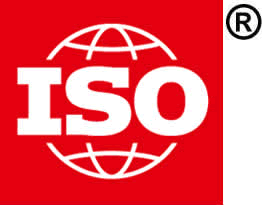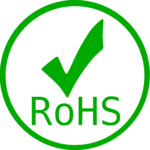
Companies proudly display it, and customers often require it. It can be a large undertaking to receive, but can help to streamline processes, maintain records, align goals, and avoid costly mistakes. We of course are talking about ISO 9001 certification. This quality standard helps maintain a customer focus and top management buy-in for a continual improvement plan throughout your company.
Having an ISO 9001 certification can lead to easing a customer’s concerns over your processes, and could even save you time and money through establishing better practices and more efficient systems. It can also be used as a selling point for new business if your competitors aren’t certified.
Understanding ISO 9001
The International Organization for Standardization (ISO) was started in 1946 with people from 25 countries “to facilitate the international coordination and unification of industrial standards.” At the current time, ISO has more than 22,263 standards that address technology and manufacturing. According to ISO’s website, “there are currently over one million companies and organizations in over 170 countries that are certified to ISO 9001.”
Both consumers and businesses benefit from being ISO certified, and using companies that are ISO certified. ISO 9001 is used to ensure that your customers benefit from consistent goods and services. It is worth noting, that ISO is not limited to only manufacturing, but they also cover sectors such as safety in food and healthcare. Seeing the ISO mark on consumer products is even becoming more common.
Working Out Your Quality
Getting ISO 9001 certified can be a lengthy process depending on how your current operations are setup. Chances are likely your best / easiest bet for getting certified is bringing a third party in-house to get your systems in place. This third party will assist you in developing your quality policy, establishing leadership over processes, creating a road-map to direct the improvements, and give you an assessment of where you stand.
Part of your road-map will include establishing a manager to oversee the quality manual, develop a supplier quality manual, setup employee training, maintaining records, creating document control, having proper identification and traceability, conducting internal department based audits, and the list goes on.
Assuming you made the suggested improvements, now the fun begins; time to be audited by a third party. There are several third party auditors out there, and Samtec uses BSI as the third party registrar for quality and environmental standards. The length of the audit will depend on the size and the complexity of your business. You can normally count on one to three days for the onsite audit to take place.
As previously stated, being ISO 9001 certified isn’t a one stop shop, it is part of a continuous improvement plan. Your company will need to continue to maintain the processes you put in-place to become certified, look for ways to improve those processes, audit each applicable department yearly while keeping records of the audits, and prepare for the re-certification in three years. After all, it did take a lot of time and effort to become certified, you might as well get the most of it!
Samtec holds several certifications including ISO 9001, IATF 16949, and ISO 14001. You can find these certs for each of our facilities, as applicable, here. For additional questions concerning quality and/or Samtec’c certs, please contact [email protected].
For more information about the International Organization for Standardization make sure to check out their website. If compliance is of interest to you, then make sure to check out our blog on UL Testing, and ICP Testing.


